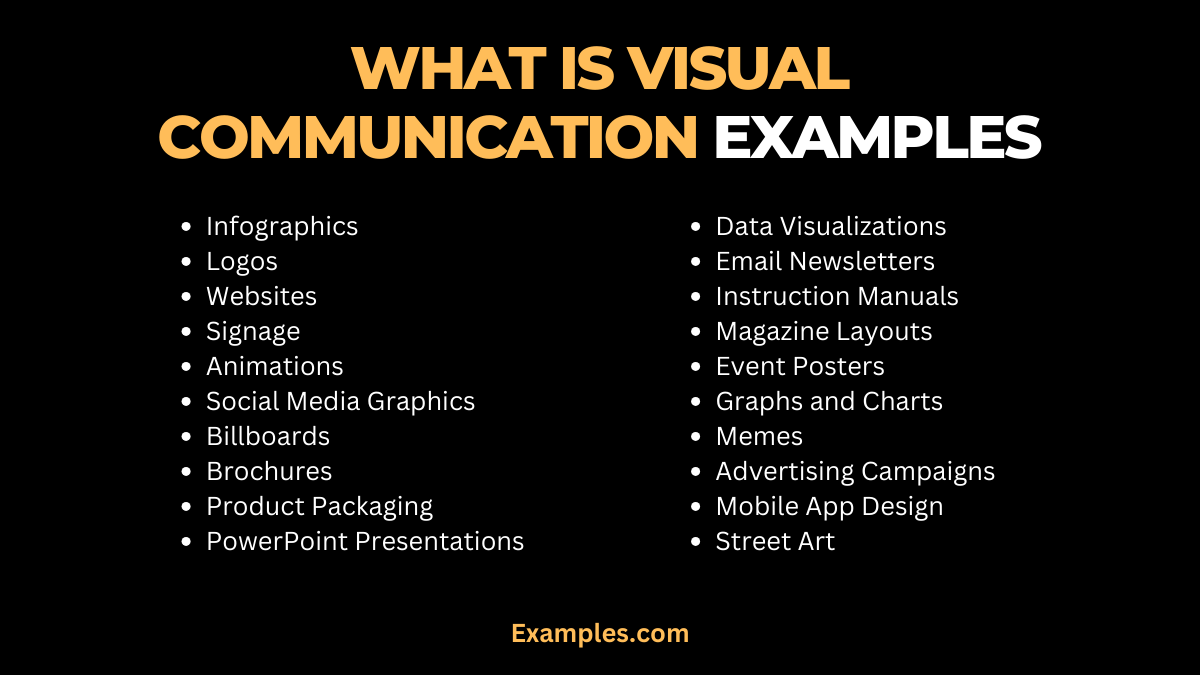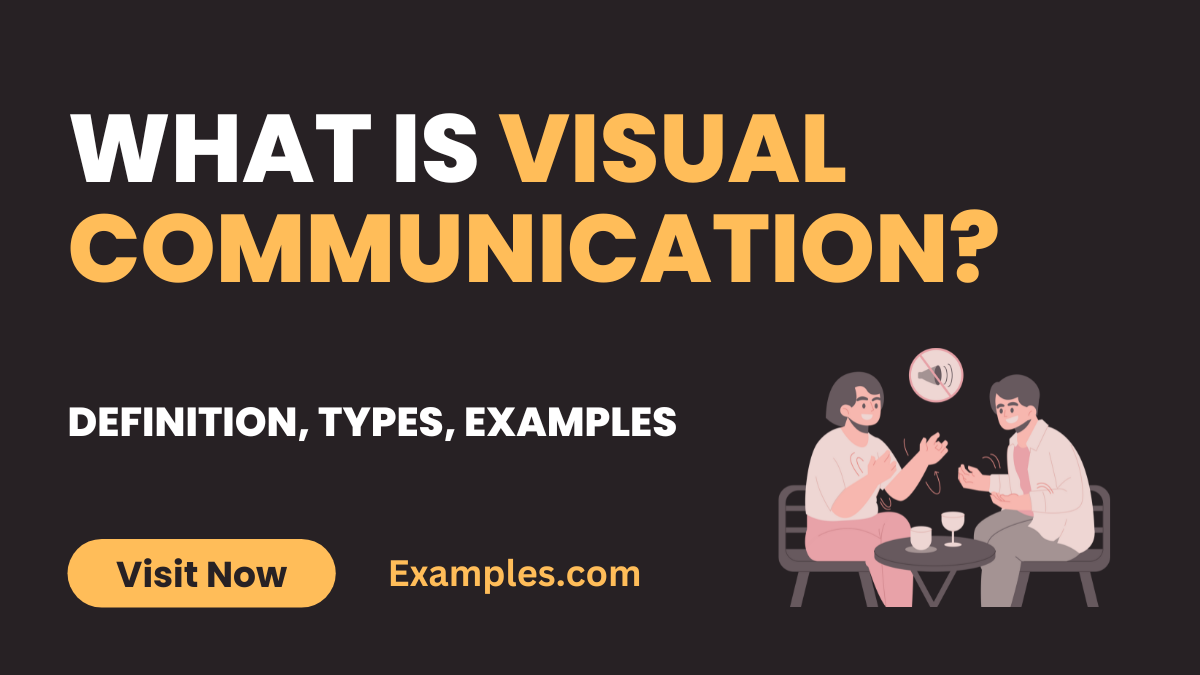What is Visual Communication?
Visual communication stands as a pivotal element in our digital era, where conveying ideas through visuals often surpasses the power of words. This comprehensive guide delves into the intricacies of visual communication, illuminating its various forms and functions. From intricate infographics to persuasive advertisements, we’ll explore a range of communication examples, each demonstrating the unique ability of visuals to inform, persuade, and engage audiences. Discover how images, symbols, and design principles can effectively transmit messages and emotions, opening new dimensions in communication strategies.
Download What is Visual Communication PDF
What is Visual Communication?

Visual communication is the practice of conveying messages and information through visuals rather than text or sound. It involves using images, symbols, colors, and designs to express ideas and share information. This communication can range from simple signs and icons to complex graphics and interactive designs. Its power lies in its ability to present information quickly and effectively, often transcending language barriers and making complex ideas more accessible and engaging. Visual communication is a key component in various fields such as advertising, graphic design, and education.
20 What is Visual Communication Examples

Visual communication is a dynamic and influential way of conveying messages using visual elements. It integrates art, design, and technology, making information more accessible and appealing. This form of communication thrives across various platforms, from traditional media to digital landscapes, enhancing our understanding and interaction with the world. Here are 20 unique and impactful examples of visual communication:
- Infographics: Simplifying complex data into engaging, easy-to-understand visuals.
- Logos: Creating a visual identity for brands, encapsulating their essence.
- Websites: Combining aesthetics and functionality for effective online communication.
- Signage: Providing direction and information through visual cues in public spaces.
- Animations: Bringing stories and concepts to life through moving graphics.
- Social Media Graphics: Crafting eye-catching images to capture attention and convey messages quickly.
- Billboards: Large-scale advertising using striking visuals for mass appeal.
- Brochures: Blending images and text for informative and persuasive marketing materials.
- Product Packaging: Designing visually appealing packages that communicate brand values and product information.
- PowerPoint Presentations: Enhancing verbal presentations with supporting visual aids.
- Data Visualizations: Turning complex data into clear, visually digestible charts and graphs.
- Email Newsletters: Integrating visuals and text for engaging digital communication.
- Instruction Manuals: Using diagrams and images to simplify instructions.
- Magazine Layouts: Artfully arranging text and images for an immersive reading experience.
- Event Posters: Utilizing compelling visuals to promote events and attract audiences.
- Graphs and Charts: Presenting trends and statistics in a visually straightforward manner.
- Memes: Conveying cultural concepts through relatable, often humorous images.
- Advertising Campaigns: Crafting visual narratives to promote products or services.
- Mobile App Design: Balancing aesthetics and usability in app interfaces.
- Street Art: Using public spaces to visually express artistic or social messages.
Each of these examples represents a distinct application of visual communication, effectively combining imagery, color, and design to convey specific messages and evoke responses.
What Plays a Key Role in Visual Communication?
Visual communication is a multifaceted field where various elements play crucial roles in conveying messages effectively and engagingly. Understanding these key components is essential to master the art and science of visual communication. Here’s a closer look at the primary elements that make visual communication impactful:
Design Principles
The foundation of effective visual communication lies in robust design principles. Elements like balance, contrast, alignment, repetition, and proximity determine how visually appealing and coherent a communication piece is. Adhering to these principles ensures that the visual message is not only aesthetically pleasing but also easy to comprehend.
Color Psychology
Colors are powerful tools in visual communication. They evoke emotions, attract attention, and can significantly impact the viewer’s perception. The psychology behind color choices plays a significant role in conveying the right mood and message. For example, blue often represents trust and professionalism, while red can signify urgency or excitement.
Typography
The style, arrangement, and appearance of text greatly influence how information is received. Typography can set the tone of the message, highlight important details, and contribute to the overall readability. Effective use of typography ensures that the textual content complements the visual elements and enhances the overall communication.
Imagery and Icons
Images and icons are direct and efficient ways to communicate ideas and concepts. They can represent complex information in a more digestible and engaging manner. The use of relevant and high-quality images or universally recognized icons can significantly enhance the effectiveness of the visual message.



